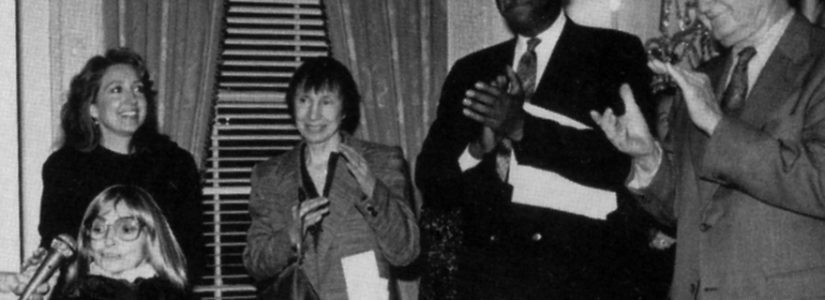
Leading the Commission: Interviews with Former Chairs of the Landmarks Commission
May 14, 2011 | by Liz McEnaney
Article from the Spring 2011 Newsletter
I took up residence in New York City about the same time that Robert Tierney was appointed the tenth Chair of the Landmarks Preservation Commission. Now, as an oral historian for the Archive Project, I have the opportunity to go back in time to understand and document the workings of past Commissions through my interviews with six former Landmarks Chairs: Beverly Moss Spatt; Kent Barwick; Gene Norman; Laurie Beckelman; Jennifer Raab; and Sherida Paulsen.
As a series, these interviews, along with Anthony C. Wood’s earlier interviews with former Chairs Geoffrey Platt and Harmon Goldstone, cover over 45 years of history. Through the words of the Chairs, we are given a unique wide angle lens through which we can get a panoramic view of the history of the city – from urban development to politics to economic booms and busts, and more. We hear how preservation has become an integral part of the administration of the city and, as a result, has shaped the streets and neighborhoods we walk through and live in today. For New York City, “preservation” has not been associated with or resulted in stasis. Far from it. What “preservation” has contributed is an appreciation, a desire, an energy, and a plan for continuous and positive change. But, as the Chairs will attest, there have been many challenges since the passage of the Landmarks Law.
The interviews provide a personal account of the years these individuals served on the critically important and influential Landmarks Commission and also touch upon the civic and preservation experiences of the Chairs before and after their service. The transcripts, audio and video clips of these sessions will be an instrumental resource to preservationists, historians, urbanists, and others interested in the history of New York City.
This project complements the larger work of the Archive Project and we believe it will be the first in a series of strategic oral histories aimed at building a solid collection of raw material for future historians. Our next major project (depending on funding) is to develop oral histories in concert with key preservation civic leaders from the past 45 years in order to capture information and attitudes from the preservation “infrastructure” within government (the Chairs) and outside influences (the leadership of the nonprofit community).
The Landmarks Chair Oral History Project is being made possible with funding from the Robert A. and Elizabeth R. Jeffe Foundation.




